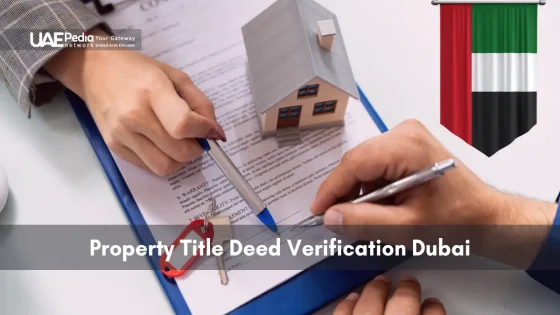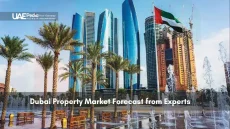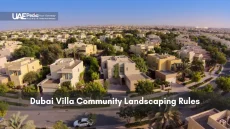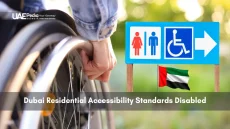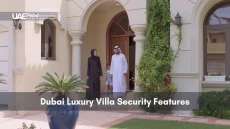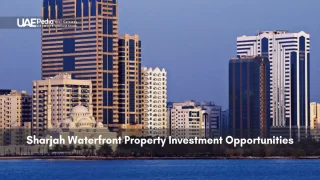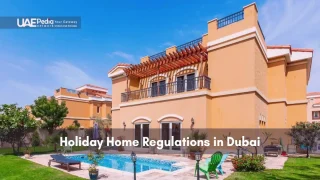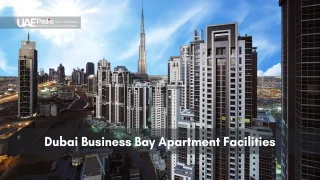What if your neighborhood could shape your child’s future as much as their classroom? In one Middle Eastern metropolis, 92% of parents report satisfaction with their children’s academic progress—a statistic that reflects its evolving educational ecosystem.
This vibrant city blends cutting-edge learning environments with sun-drenched communities where playgrounds meet professional networks. From STEM-focused academies to bilingual programs honoring Arabic heritage, choice defines the experience for relocating households.
We’ve mapped out essential insights for creating your ideal balance—because morning commutes should feel simpler than solving quadratic equations. Discover how transportation networks sync with academic calendars, which residential clusters prioritize pedestrian safety, and why certain curricula align better with university pathways.
Dubai’s education landscape comprises public, private and international institutions, serving over 90% of students in privately run schools. Curricula range from the Ministry of Education’s Arabic-medium programs to IGCSE, CBSE, IB and AP frameworks, with 84% of private and 91% of international schools rated Good+ or Outstanding by the KHDA. Stakeholders have introduced STEM labs, creative-thinking modules and bilingual tracks that honor Arabic heritage, while urban planning synchronizes school locations with residential clusters and transit lines to minimize commute times and enhance pedestrian safety.
Admissions follow three main phases—Early Bird (Jan–Mar), Standard (Apr–Jun) and Late Entry (Jul–Sep)—with most families advised to submit documentation 10–12 months before the intended start date. Technical factors such as assessment scheduling, seat-availability statistics and recommendation requirements inform application strategies. Neighborhood selection is driven by proximity metrics (walkability scores, metro access), housing costs (villas around AED 2.1 M in school-centric communities) and community infrastructure (parks, clinics, recreational hubs). Aligning lease or purchase timelines with academic calendars streamlines financial planning and operational logistics.
- Comparative analysis of 6 major educational frameworks available locally
- Neighborhood spotlights balancing housing budgets with campus proximity
- Admissions timeline cheat sheet for stress-free enrollment
Understanding Education in Dubai for Families
Choosing where your kids learn is like picking the right ingredients for their future success. Nine out of ten students here attend privately-run institutions, creating a mosaic of teaching styles and cultural perspectives. Let’s unpack what this means for your household.
Over 77% of students in Dubai attend private schools rated Good or better by the KHDA, confirming the high standard of education across the emirate. Ref.: “Dubai school inspection ratings” [!]
Public & Private Systems Decoded
Government-funded institutions provide Arabic-language instruction at no cost to citizens, while private alternatives serve most international residents. Recent reforms introduced creative thinking programs and robotics labs in public classrooms—a nod to future-ready skills.
| School Type | Curriculum | Languages | KHDA Rating* |
|---|---|---|---|
| Public | Ministry of Education | Arabic Focus | 65% Improved |
| Private | Multiple Frameworks | Bilingual Options | 84% Good+ |
| International | Global Systems | English/French/etc. | 91% Outstanding |
Dubai’s Education 33 strategy champions personalised learning journeys and creative thinking ‘Game Changer’ initiatives to equip students with future skills. Ref.: “Education 33 strategy set to transform Dubai’s education landscape” [!]
Global Learning Environments
From British GCSEs to French baccalaureate programs, international institutions offer familiar academic pathways. Many feature Olympic-sized pools, theater studios, and innovation hubs. One parent shared:
“Our daughter codes apps in the makerspace after Arabic calligraphy club—it’s the blend we dreamed of.”
With 216 private institutions and 77% earning ‘Good’ or better ratings from local regulators, these campuses become launchpads for global citizenship. Children often graduate fluent in three languages, armed with both textbooks and real-world problem-solving grit.
In PISA 2022, Dubai’s private schools ranked sixth globally for creative thinking, reinforcing the city’s emphasis on innovation in curricula. Ref.: “Dubais Best Schools 2024: Top Picks and KHDA Insights” [!]
Dubai Area Guide for Families with Schools
Imagine your morning walk includes school drop-offs and sunset park playdates. The secret to a thriving household often lies in streets where classrooms and coffee shops coexist—spaces where education extends beyond textbooks into shared community values.
Neighborhoods like Arabian Ranches and The Springs demonstrate this harmony. These enclaves weave quality education into daily life, with campuses just minutes from tree-lined sidewalks. Parents praise the blend of academic rigor and relaxed weekend farmers’ markets—proof that a supportive home environment amplifies classroom success.
Here’s what sets these areas apart:
- Pedestrian-friendly designs reducing commute stress
- Recreational hubs fostering neighborly connections
- Mixed-use spaces where kids bike safely to robotics clubs
One resident noted,
“We chose our villa not just for its rooms, but for the friendships our children forged at the community pool.”
This mindset reflects a growing trend—families prioritizingcommunityvibrancy alongside school rankings.
When exploring options, consider how local parks, libraries, and cultural centers complement academic offerings. The right location becomes a third teacher, nurturing curiosity through everyday interactions. For deeper insights into pairing residences with learning institutions, explore our guide on understanding the education sector—your first step toward crafting a lifestyle where growth happens naturally.
Read More:
Navigating the School Admissions Process
Securing your child’s spot in a top learning center feels like scoring concert tickets—act fast or miss out. With limited spaces in primary grades and nurseries, timing becomes your secret weapon. Let’s chart your path through this high-stakes maze.
Beat the Clock: Rolling Admissions Explained
Many institutions accept applications year-round, but priority goes to early birds. One mother shared her experience:
“We applied during Ramadan quiet hours—got confirmation before summer break!”
Key steps to remember:
- Submit documents 10-12 months before desired start date
- Track multiple options simultaneously
- Prepare for assessment days with mock interviews
| Admission Phase | Timeline | Availability | Success Rate |
|---|---|---|---|
| Early Bird | Jan-Mar | 85% seats open | 72% |
| Standard | Apr-Jun | 40% remaining | 58% |
| Late Entry | Jul-Sep | 15% waitlist | 33% |
Dubai schools typically open applications 6–12 months before the academic year, creating a tight window that demands early planning from parents. Ref.: “Best Time to Enrol in a Dubai School”
Playing the Numbers Game
Top-rated nurseries often have 3:1 applicant ratios. Increase your odds by:
- Visiting campuses during open days
- Highlighting unique family values in applications
- Securing recommendation letters from community leaders
One father revealed his strategy: “We registered at three nurseries—got our first choice plus backup.” This approach transforms stress into confidence, letting you focus on what matters: your child’s bright future.
Quality Education and Curriculum Choices in Dubai
Imagine your child’s education as a passport—stamped with global opportunities yet rooted in local values. The city’s classrooms now offer 17 distinct learning frameworks, from Singapore Math enthusiasts to Waldorf-inspired creativity hubs. This smorgasbord of academic flavors lets households craft personalized learning journeys.
Government initiatives transformed education access over the past decade. The KHDA (Knowledge & Human Development Authority) introduced real-time school performance dashboards, while public institutions now blend Arabic traditions with AI labs. One principal noted:
“We’ve shifted from rote learning to coding marathons—our students build apps addressing environmental challenges.”
Curriculum choices evolve with a child’s age and stage:
| Age Group | Curriculum Focus | Learning Goals |
|---|---|---|
| 3-10 | Ministry of Education (MoE) | Bilingual foundations |
| 11-14 | IGCSE/CBSE | Critical thinking |
| 15-18 | IB/AP Programs | University readiness |
Timing matters when switching systems. Early years favor play-based exploration, while teens thrive in project-driven environments. Navigating the UAE’s education system becomes simpler when aligning academic pathways with developmental milestones.
Access to quality education isn’t a privilege here—it’s a priority. Over 94% of students attend institutions meeting global benchmarks. Whether your child thrives in STEM competitions or art studios, the right fit awaits. Just remember: the best curriculum isn’t about prestige—it’s about sparking that “aha!” moment when concepts click.
Dubai excels in PISA 2022—2nd in financial literacy and 6th in creative thinking—but ranks 14th in science, highlighting the balance between innovation skills and traditional academic metrics. Ref.: “KHDA News: Dubai private schools rank 2nd globally in financial literacy and 6th for creative thinking in PISA study” [!]
Exploring International and American Schools in Dubai
Picture a campus where robotics labs sit beside Arabic poetry workshops—this is modern learning in action. The city hosts over 90 international institutions, each crafting unique ecosystems where students become global citizens. Let’s explore what makes these spaces thrive.
Where Innovation Meets Tradition
Top-rated institutions like Dubai American Academy (KHDA “Outstanding”) blend Advanced Placement courses with Arabic language immersion. Others, such as American School of Dubai, offer flexible pathways through project-based learning. Key features parents love:
- Dual-language programs connecting 140+ nationalities
- University-style research centers for teens
- Community service initiatives tackling real-world issues
Decoding the American Approach
Unlike British or IB systems, American-curriculum schools emphasize:
| Focus Area | American Model | Other Systems |
|---|---|---|
| Assessment | Continuous projects + SATs | Final exams weighted |
| Electives | 150+ options by Grade 10 | Structured streams |
| Flexibility | Customizable schedules | Fixed timetables |
One mother shared her insight: “Our son switched from GCSEs to AP classes—suddenly, his astronomy club work counted toward physics credits.” This adaptability attracts families seeking tailored growth paths.
When evaluating options, consider how institutions nurture both academic and social skills. Look for active parent groups that shape school policies, or robotics teams competing in global championships. The right fit feels less like a classroom—more like a launchpad.
Early Childhood Education and Nurseries in Dubai
The first steps in learning begin long before textbooks—they start with playdough and puzzle mats. Over 300 nurseries here offer everything from forest-school adventures to tech-integrated playrooms. Let’s explore how to match your toddler’s curiosity with the right environment.
Choosing the Right Nursery for Your Child
Parents juggle more than crayons when selecting a nursery. Operating hours that sync with work shifts matter as much as educational philosophy. One father shared his aha moment:
“We realized our top-choice nursery closed during summer—almost derailed our schedules!”
Key factors to weigh:
- Timing: 65% of nurseries offer extended hours (6 AM–7 PM)
- Fees: Average AED 20,000–45,000 annually, with sibling discounts
- Safety: Look for KHDA-certified staff ratios (1:8 for toddlers)
Review of Curriculum and Language Options
Multilingual programs aren’t just trendy—they build neural pathways. Many centers blend Montessori methods with Arabic storytelling, while others introduce coding through building blocks. Consider these elements:
| Curriculum Type | Language Mix | Play Focus |
|---|---|---|
| Reggio Emilia | English + 1 elective | Art exploration |
| EYFS British | Full bilingual | Outdoor learning |
| Waldorf | Arabic emphasis | Creative play |
Don’t overlook practical details. Nurseries near metro stations or with shaded walking paths simplify transport routines. One mother noted: “The 10-minute stroll to our nursery doubles as nature time—we count birds and practice colors.” Nearby parks with toddler-friendly sports equipment extend learning beyond classroom walls.
Primary and Secondary Education Insights
Think of your child’s education as a series of stepping stones—each year builds toward their future. The journey from crayon grip to calculus unfolds across 13 formative years, shaped by intentional curriculum design and passionate educators. Let’s map this path together.
Grade-Level Guidance and Curriculum Structure
Primary education (Grades 1-5) focuses on foundational skills through interactive projects. One parent described it as “learning multiplication through grocery store roleplay.” Secondary levels (Grades 6-12) shift toward specialization, with options like:
| Phase | Age Group | Key Focus |
|---|---|---|
| Foundation | 6-10 years | Literacy & numeracy |
| Intermediate | 11-13 years | Critical thinking |
| Advanced | 14-18 years | Career pathways |
Prices vary significantly across institutions. For example:
- Primary years: AED 18,000–35,000 annually
- Middle school: AED 25,000–48,000
- High school: AED 32,000–65,000
Key members shape this journey. Teachers trained in child psychology blend academic rigor with emotional support, while administrators ensure resources match learning goals. One principal shared:
“Our team meets weekly to align lesson plans with real-world applications—like using desert ecosystem studies to teach data analysis.”
Understanding fee structures helps families plan long-term. Many schools offer sibling discounts or payment plans. Always ask about hidden costs like technology fees or extracurricular charges—these can add 12-18% to base prices.
Tertiary Education and University Opportunities in Dubai
Your degree could come with a side of desert sunrises and global connections. Over 30 international universities operate branch campuses here, blending world-class academics with Middle Eastern innovation. These institutions turn lecture halls into launchpads—where students prototype startups between classes.
Choosing Your Academic Compass
Accreditation separates temporary stops from career accelerators. Look for:
- Global recognition (CHEA, WASC, or QAA approvals)
- Industry partnerships with tech giants or research institutes
- Alumni networks spanning 100+ countries
Jumeirah Village Circle hosts campuses like Murdoch University Dubai, where engineering students test solar solutions in climate-controlled labs. Meanwhile, communities like Arabian Ranches attract scholars seeking quiet study nooks near innovation hubs.
| University | Accreditation | Unique Feature |
|---|---|---|
| NYU Abu Dhabi | Middle States Commission | Desert Field Station |
| University of Birmingham Dubai | QAA UK | AI Ethics Research Center |
| Manipal Academy | NAAC India | Medical Simulation Labs |
Faculty That Fuels Futures
Great professors don’t just teach—they ignite curiosity. Check if lecturers:
- Publish in top-tier journals (Nature, IEEE)
- Lead cross-border research projects
- Hold patents in their field
One computer science student shared: “My professor splits time between robotics lectures and consulting for Dubai’s smart city projects—our assignments solve real municipal challenges.”
Proximity matters. Campuses near Jumeirah Village Circle offer metro access to internships, while those in established academic clusters foster mentorship opportunities. Your university’s location shapes both your social life and professional network.
Housing and Community Amenities for Families
What if your front door opened to both cozy evenings and tomorrow’s opportunities? Neighborhoods here weave learning into daily life—where playgrounds double as social labs and school gates greet familiar faces.
Where Learning Meets Living
Parents often prioritize walking routes over square footage. The Springs community, for instance, places the dubai british school within a 7-minute stroll of villas. One resident shared:
“Our kids bike to robotics club while we grab groceries—it’s like our street’s designed for growth.”
Key features shaping these hubs:
- Parks with shaded study nooks near residential clusters
- Community centers hosting parent-teacher mixers
- Retail plazas offering tutoring services alongside cafes
| Community | School Proximity | Avg. Villa Price |
|---|---|---|
| The Springs | 5-10 mins walk | AED 2.1M |
| Jumeirah Park | 8-12 mins drive | AED 3.8M |
| Al Barsha | 3-7 mins drive | AED 1.9M |
New developments integrate knowledge human development principles—think solar-powered homes near STEM-focused campuses. Rental options near english speaking school hubs range from AED 120k/year for apartments to AED 350k for waterfront villas.
Quality isn’t just about marble countertops. Look for neighborhoods with KHDA-recommended traffic calming measures and shaded pathways. As one realtor noted: “Families now ask about school partnerships before floor plans.”
Safety, Security and Community Infrastructure
Peace of mind isn’t just a feeling—it’s designed into the streets where your kids chase fireflies. Neighborhoods here treat safety like architecture, building trust through smart design and vigilant partnerships.
Guardians of the Everyday
Gated communities blend tech with tradition. Think facial recognition gates beside date palm-lined sidewalks. One parent in Arabian Ranches shared:
“Our night patrols know every child’s name—it’s like having 50 extra aunties watching over the block.”
Key features redefine modern security:
- AI-powered license plate scanners at entry points
- Emergency response teams stationed within 90 seconds
- Monthly safety audits by the Human Development Authority
Unencrypted facial recognition data at gated-community entry points poses serious privacy risks, as breaches can lead to irreversible identity theft. Ref.: “Facial Recognition Technology and Privacy Concerns” [!]
These measures aren’t just about locks—they shape lifestyles. Properties in secured zones retain 18% higher value than non-gated peers. The Human Development Authority enforces strict standards, requiring:
| Standard | Requirement | Frequency |
|---|---|---|
| Lighting | 50 lux minimum | Nightly checks |
| Surveillance | 95% coverage | Real-time |
| Staff Training | Quarterly updates | Mandatory |
When house hunting, peek beyond pool views. Ask about community watch programs or how Jumeirah English Speaking schools coordinate with local patrols. As one resident advised: “Walk the streets at dusk—you’ll see safety in action when soccer games spill onto driveways without a second thought.”
Transportation, Connectivity and Commute Tips
Navigating a new city’s transit system can feel like solving a Rubik’s Cube—until you learn the patterns. Here’s how to align your daily routes with efficiency and ease.
Overview of Public Transport Options
The metro’s red and green lines stretch 90km, syncing with feeder buses and water taxis. Key features:
- Peak-hour trains every 3.5 minutes (6 AM–8 PM)
- Women-only carriages and Gold Class upgrades
- Nol Cards for seamless transfers between systems
| Option | Coverage | Peak Fare |
|---|---|---|
| Metro | 85% business hubs | AED 8.50 |
| Bus | 140+ routes | AED 5.00 |
| Taxi | 24/7 availability | AED 2.50/km |
Dubai’s automated metro system has experienced technical faults that halted lines during peak hours, stranding commuters and underlining the impact of service outages. Ref.: “Dubai Metro Faces Technical Glitches, Leaving Thousands” [!]
Driving Tips and Road Network Insights
Beat Sheikh Zayed Road gridlock with these hacks:
- Use alternative routes via Al Khail Road after 7:30 AM
- Check Salik toll gates on Waze before departure
- Park & Ride near Jumeirah Village metro stations
Residents near Village Circle report 12-minute school runs versus 35+ minutes elsewhere. One commuter shared:
“Leaving 7 minutes early lets me bypass the E11 bottleneck—it’s like finding a secret level in a video game.”
Proximity matters. Neighborhoods like Arabian communities offer quick access to metro lines and school zones. Combine ride shares with metro trips during rush hours for stress-free mobility.
Real Estate Options and Investment Considerations
Think of property here as a piggy bank that grows alongside your child’s height chart. Communities near top-rated institutions saw 22% higher value retention during recent market shifts. Let’s unpack how bricks and mortar can build both homes and futures.
Villas in academic hubs like Jumeirah Village Circle average AED 2.4M, while apartments near healthcare facilities start at AED 1.1M. One investor shared:
“We chose a townhouse 800 meters from both a clinic and international campus—rental demand never dips below 94%.”
Current trends reveal smart buying strategies:
- Properties within 1km of schools lease 18% faster
- Green spaces add 7-12% premium to resale values
- Communities with clinics see 35% lower vacancy rates
| Property Type | Avg. Rent per year | Price Growth (2023) |
|---|---|---|
| 3BR Villa | AED 180,000 | +6.8% |
| 2BR Apartment | AED 95,000 | +4.1% |
| Townhouse | AED 135,000 | +9.3% |
Hidden costs matter. Service charges near healthcare facilities run AED 18-25 per year per square foot—budget accordingly. New developments along metro lines offer payment plans matching academic calendars, letting families sync mortgage dates with tuition schedules.
Seasoned agents suggest this checklist:
- Walkability score to nearest campus/clinic
- Future infrastructure projects in the area
- Rental yield history over 5 years
As one parent-turned-landlord noted: “Our duplex pays its own mortgage through tenants—it’s like having a college fund that builds itself.” Whether buying or leasing, align your address with growth corridors where education and wellness intersect.
Balancing Education, Healthcare and Recreational Facilities
A thriving family ecosystem isn’t just about addresses—it’s where stethoscopes meet soccer fields. Communities designed for modern living weave learning, wellness, and play into every block. Let’s explore how these elements create neighborhoods that nurture both report cards and scraped knees.
Access to Quality Healthcare for Families
Top-tier medical care should feel as close as the corner store. Areas like Jumeirah Village Circle place clinics within a 5-minute drive of international campuses. One parent shared:
“Our pediatrician’s office shares a parking lot with the science lab—it’s efficiency meets empathy.”
Essential services to prioritize:
- 24/7 urgent care centers with pediatric specialists
- Dental practices offering emergency slots
- Allergy clinics equipped for desert climate challenges
Recreational Areas and Parks for Family Bonding
Green spaces become classrooms without walls. The Meadows community features botanical gardens doubling as biology labs, while Dubai Hills Estate’s cycling tracks host weekend physics experiments (who knew hill gradients teach acceleration best?).
| Neighborhood | Healthcare Access | Recreational Features |
|---|---|---|
| Arabian Ranches | 3 clinics within 2km | Equestrian center + skate parks |
| Jumeirah Park | Children’s hospital nearby | Interactive science playgrounds |
| Al Barsha | Multispecialty center on-site | Community farming plots |
Families seeking balanced lifestyles should map these three pillars: education dubai institutions, healthcare networks, and adventure zones. The sweet spot? Areas like Town Square Dubai—where robotics clubs meet physiotherapy sessions under one solar-paneled roof.
Check out the below:
Final Reflections and Moving Forward
Your family’s next chapter starts with the right map—one where sidewalks lead to classrooms and sunset bike rides. Across this sunlit emirate, educational choices blend innovation with tradition, while neighborhoods designed for growth turn commutes into moments of connection.
Communities like those in Jumeirah Village Circle prove that home extends beyond walls. Whether your child is three or fifteen years old, these spaces adapt to their curiosity. Safety nets woven into daily life—from shaded play areas to tech-enhanced security—let exploration thrive naturally.
Take these insights as your compass:
- Prioritize walkable zones where learning and leisure intersect
- Align housing choices with academic calendars for smoother transitions
- Celebrate cultural fusion through bilingual programs and local traditions
Families with children years old often find the sweet spot near mixed-use hubs. One parent shared: “We gained hours weekly when piano lessons moved next door to our grocery store.” These practical wins add up, turning relocation challenges into launchpads.
Your adventure begins here—where every streetlight guides you home. Pack your curiosity, bookmark this guide, and step into a thriving family ecosystem. The future’s brighter when communities like yours grow together.
Public schools follow the UAE’s Ministry of Education curriculum, primarily taught in Arabic, while private institutions offer international programs like British, American, or IB. Many expat families opt for private schools due to language flexibility and globally recognized accreditation.
Apply early—many popular institutions like Dubai British School and Jumeirah English Speaking School have waitlists. Submit documents ahead of deadlines, attend open days, and consider flexible catchment areas. Some schools prioritize siblings or residents of nearby communities like Arabian Ranches.
Areas like Jumeirah Village Circle and Arabian Ranches offer proximity to schools, parks, and healthcare. These communities often feature pedestrian-friendly layouts, shared sports facilities, and shuttle services to major campuses, making daily routines smoother for busy families.
Yes! The Knowledge and Human Development Authority (KHDA) oversees early childhood centers, ensuring safety and curriculum standards. Look for KHDA ratings and visit spaces like Blossom Nursery or Chubby Cheeks to assess language options, teacher ratios, and play-based learning approaches.
Many schools provide buses with GPS tracking—check routes during enrollment. For drivers, communities like JVC have optimized road networks to reduce congestion. Metro links near institutions like GEMS Modern Academy also help older students travel independently.
Clusters such as Dubai Healthcare City host pediatric clinics and hospitals within 10–15 minutes of most residential areas. Schools often partner with nearby clinics for vaccinations or emergencies, while communities like The Springs include onsite medical centers for quick access.
The KHDA’s annual inspections evaluate teaching quality, student progress, and facilities. Schools rated “Outstanding” or “Very Good”—such as Dubai College or Nord Anglia International—often have robust extracurricular programs and higher university placement rates, ensuring long-term academic success.



